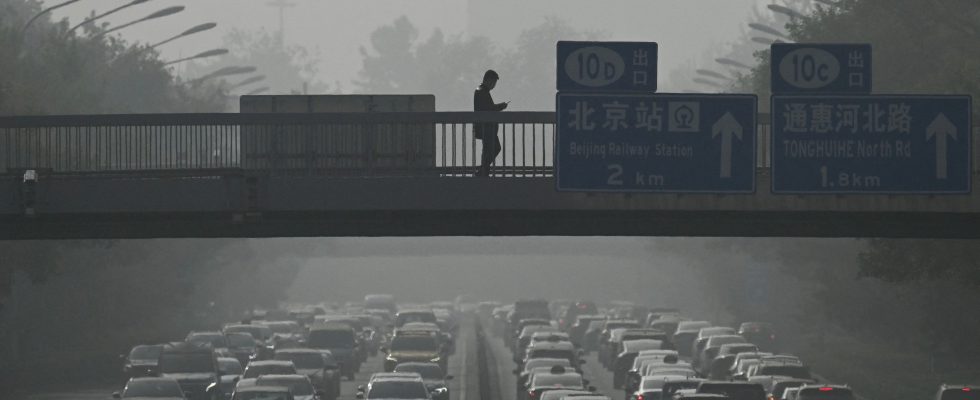Tens of millions of residents in the Chinese capital and its surrounding areas experienced one of the worst smog in months this week. This high level of pollution is expected to persist in Beijing and the surrounding region until mid-November, Chinese state media reported this Wednesday, November 1.
Concentrations of dangerous PM2.5 fine particles (less than 2.5 microns in diameter) in Beijing on Wednesday were more than 20 times higher than the recommendations of the World Health Organization (WHO), the monitoring company said. IQAir air quality. Which makes the Chinese capital the third most polluted city in the world currently, the Swiss company said.
In response to the smog, authorities took steps to limit the traffic of high-emission vehicles and encouraged residents to stay home. “Moderate” – well above recommendations – and “severe and high” pollution levels are expected to affect the Beijing, Tianjin and Hebei regions until mid-November, according to Chinese officials cited by the state-run Beijing Daily. .
The forecast for the region, home to more than 100 million people, is based on a joint analysis conducted by China’s National Environmental Monitoring Center and local weather authorities across the country.
“War against pollution”
“The main pollutants (in the Beijing-Tianjin-Hebei region) are PM2.5 and PM10,” the report said. These have been linked to premature deaths among people with heart or lung disease, as well as a host of respiratory and other health problems, according to the U.S. Environmental Protection Agency.
In Beijing, authorities issued a warning on Monday for the country’s second-highest level of pollution. And in parts of Hebei, visibility has been reduced to less than 50 meters. Authorities blamed the level of pollution on “unfavorable weather conditions.”
It should be noted that pollution peaks have now become the exception, and no longer the norm, in Beijing. Ten years ago, the city regularly exceeded records in terms of pollution, raising public health concerns and earning it the nickname “Airpocalypse” by some Western observers.
The Chinese capital declared a “war on pollution” in 2014 after winning the Winter Olympics. It has since closed dozens of coal-fired power plants and relocated heavy industries. However, while improvements have been recorded in recent years, air quality remains well below WHO standards.
China is the world’s largest emitter of greenhouse gases that cause climate change, such as carbon dioxide. The recent rise in approvals for coal-fired power plants has increased fears that China will backtrack on its goals of peaking emissions between 2026 and 2030 and achieving carbon neutrality by 2060.
